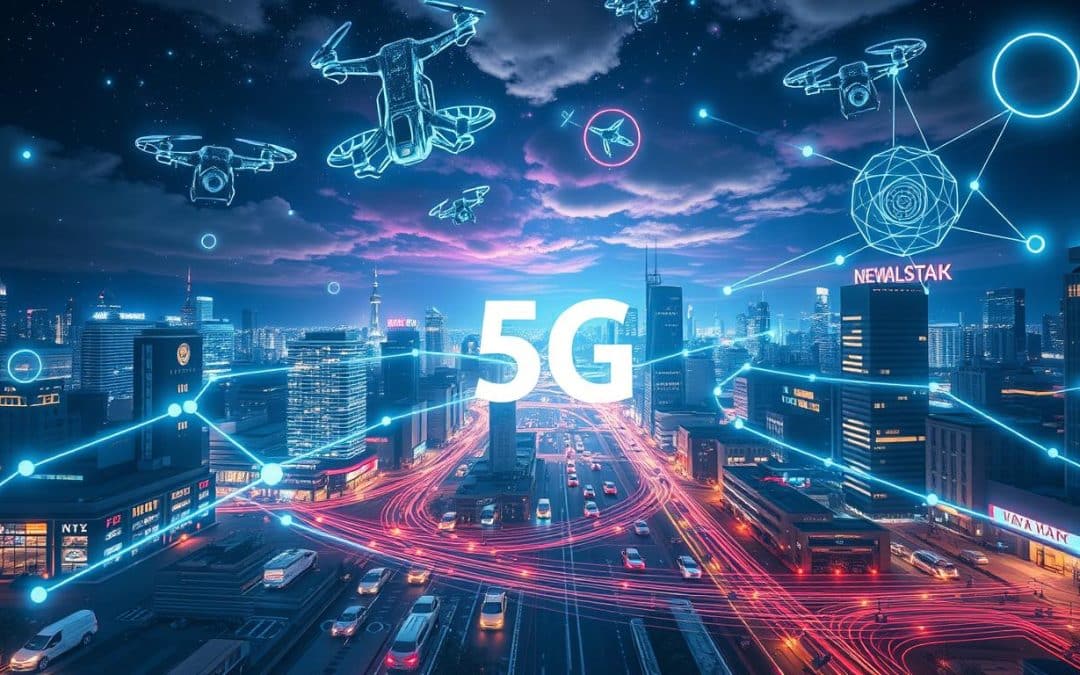5G IoT is transforming how devices connect and communicate, offering faster data speeds, lower latency, and more reliable networks. By 2025, over 75 billion IoT devices are expected globally, with 5G playing a crucial role in enabling their seamless operation. This technology is set to revolutionize industries from healthcare to transportation.
Understanding 5G Technology
5G technology represents a significant leap in connectivity, providing:
- Ultra-fast data transfer speeds
- Near-instantaneous communication between devices
- Support for a massive number of connected devices
These capabilities are essential for advanced applications like virtual reality, autonomous vehicles, and smart cities. The Nokia Innovation Center in Morocco is at the forefront of 5G development, focusing on testing and education to drive innovation.
The Role of IoT in Connectivity
The Internet of Things (IoT) connects various devices over the internet, enabling data sharing and improved functionality across multiple sectors:
- Smart homes: Enhancing security and energy efficiency
- Healthcare: Enabling remote patient monitoring and telemedicine
- Manufacturing: Optimizing production processes and predictive maintenance
As IoT continues to grow, it’s reshaping how we interact with technology in our daily lives.
Benefits of 5G IoT
The combination of 5G and IoT offers numerous advantages:
- Real-time data processing for improved efficiency
- Enhanced user experiences in various applications
- Support for a vast number of connected devices
- Enabling new innovations in smart cities, healthcare, and more
These benefits are driving the adoption of 5G IoT across industries, leading to smarter, more efficient operations.
Key 5G Applications for IoT Devices
5G is enabling transformative applications in various sectors:
- Smart cities: Improved traffic management and public services
- Healthcare: Advanced telemedicine and remote surgeries
- Manufacturing: Real-time monitoring and AI-driven optimization
- Transportation: Enhanced logistics and autonomous vehicle support
As 5G networks expand, these applications will become more widespread, driving innovation and efficiency.
Challenges in Implementing 5G IoT Solutions
Despite its potential, 5G IoT faces several challenges:
- High infrastructure costs for network upgrades
- Regulatory hurdles and security concerns
- Need for specialized skills and talent
- Difficulties in rural and remote area coverage
Overcoming these challenges requires collaboration between governments, tech companies, and local communities.
The Future of 5G IoT
As 5G networks continue to expand and evolve, the future of IoT looks promising. We can expect:
- More sophisticated and interconnected smart city solutions
- Advancements in AI and machine learning applications
- Improved energy efficiency and sustainability initiatives
- Enhanced user experiences across various industries
The ongoing development of 5G IoT will continue to drive innovation and reshape our digital landscape.
Conclusion
5G IoT is set to revolutionize connectivity for devices, offering unprecedented speed, reliability, and scalability. As this technology matures, it will enable new applications and services that were previously impossible, transforming industries and improving our daily lives. Stay informed about these developments to leverage the opportunities presented by 5G IoT in your field or business.

